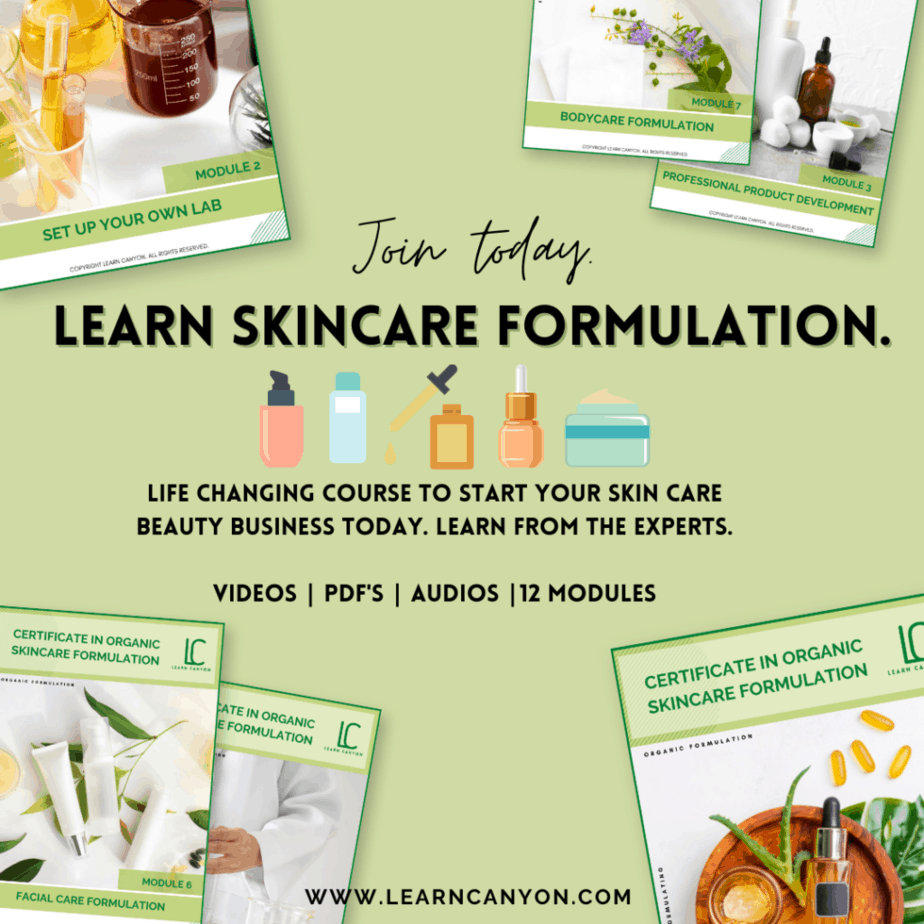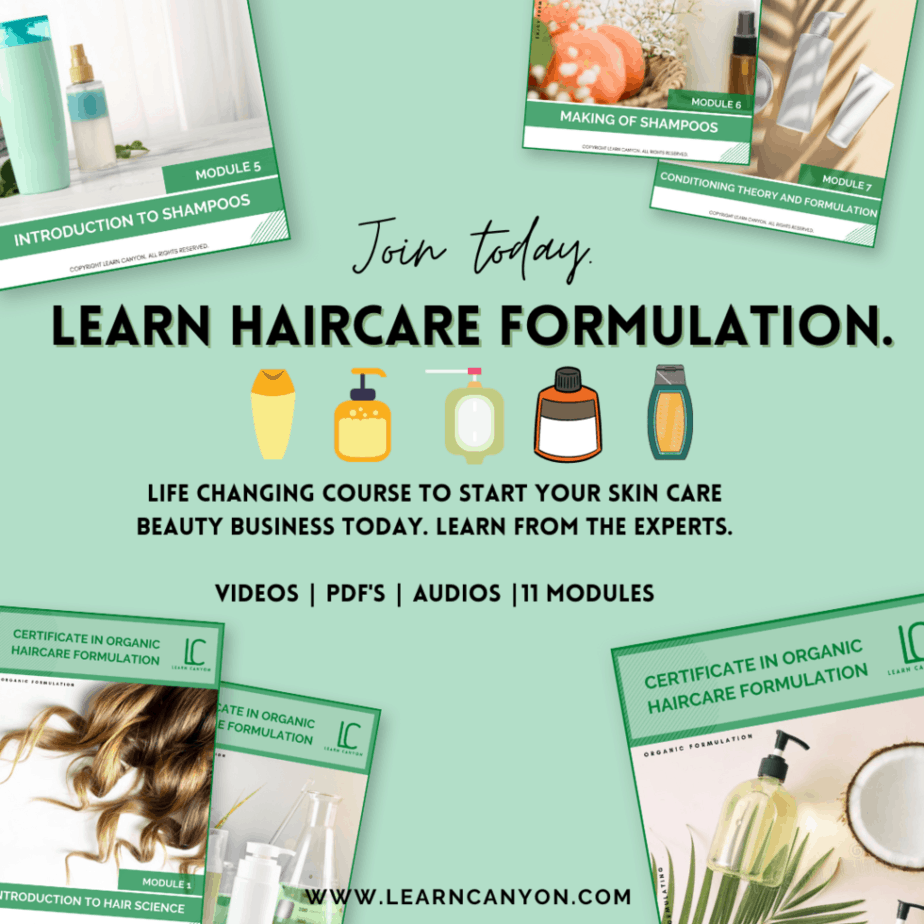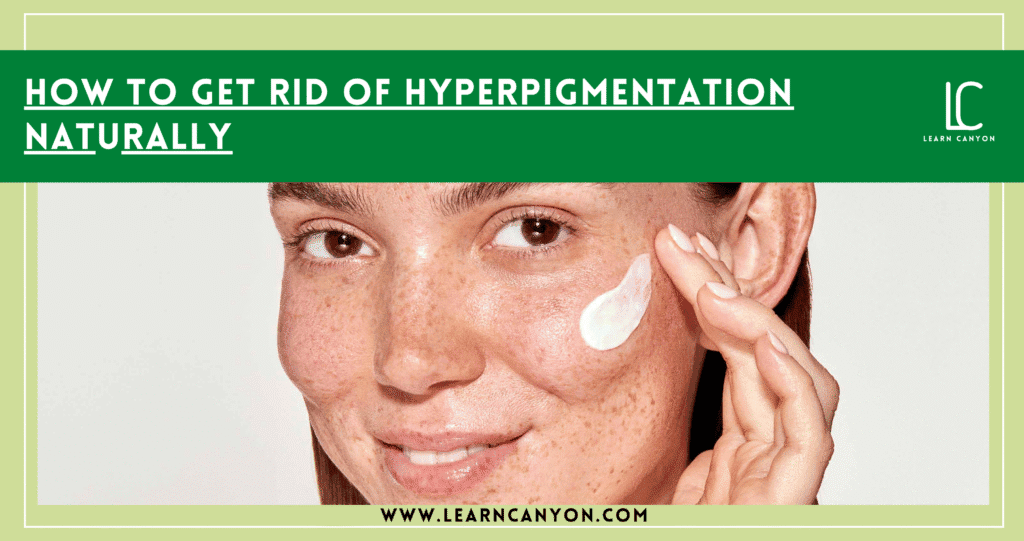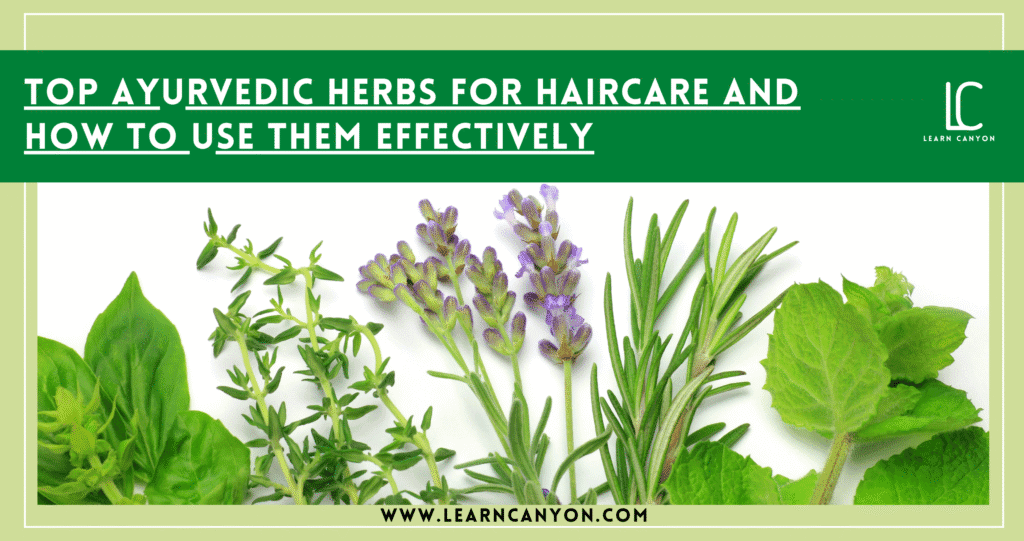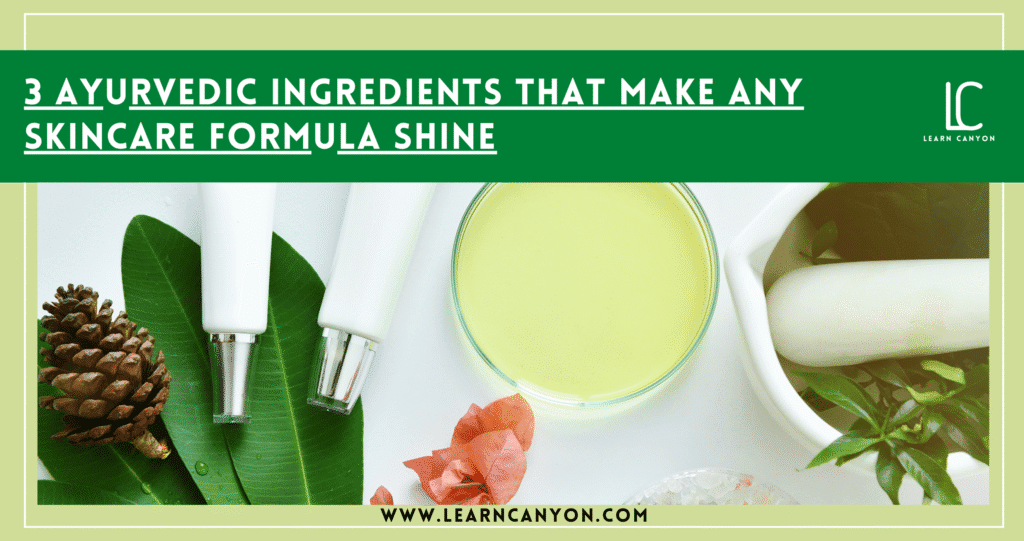If there’s one thing I’ve noticed time and again in both the lab and our Learn Canyon community, it’s this: people are ready to embrace real skin transformation, without the harsh, synthetic shortcuts.
The demand for natural solutions to target pigmentation has grown massively, and honestly, I’m not surprised.
For decades, we’ve relied on aggressive peels, hydroquinone creams, and lightening agents that promise fast results but leave the skin barrier compromised, irritated, or sensitized. That’s not the kind of glow we want, right?
What’s changing now is awareness. People are reading labels, asking questions, and turning to nature for answers. They’re seeking skincare that not only fades dark spots but also supports skin health in the long run, and this is where organic brightening truly shines.
In this blog, I’m walking you through the most effective natural solutions for hyperpigmentation, ingredients that I personally love formulating with, and that I’ve seen work wonders when used mindfully and consistently.
Let’s dive in and explore how nature can gently, beautifully help your skin find its true radiance.
What Is Hyperpigmentation and Why Does It Happen?
Let’s break this down simply, hyperpigmentation is your skin’s way of producing too much melanin in certain spots. It shows up as those stubborn dark patches, uneven tone, or post-acne marks that just don’t seem to fade, no matter how many products you try.
As a formulator, I always remind my students and clients: pigmentation is not your enemy, it’s your skin’s protective response. Melanin is designed to shield your skin from damage, especially from things like UV exposure, inflammation, hormonal fluctuations, or even friction.
There are a few main types you’ve probably come across:
- Post-inflammatory hyperpigmentation (PIH) – those leftover marks after acne, eczema, or injury.
- Melasma – usually hormone-related and common during pregnancy or with birth control use.
- Sunspots or age spots – caused by years of sun exposure catching up with you.
The root causes vary, but the mechanism is pretty similar, your melanocytes (the cells that produce pigment) get triggered and start working overtime. The good news? We can calm this process gently and effectively with the right blend of organic actives. No bleaching. No burning. Just balance.

Why Choose Organic Over Synthetic Treatments?
Let’s be honest, synthetic treatments like hydroquinone, retinoids, and chemical peels can be fast-acting, but they’re not always the gentlest, especially if you have sensitive skin, a compromised barrier, or deeper melanin levels. And in many cases, what starts as a solution turns into a cycle of irritation, rebound pigmentation, or worse, skin that’s constantly inflamed and confused.
That’s where organic skincare steps in, not just as a trend, but as a thoughtful alternative that respects your skin’s natural intelligence.
Organic treatments don’t force the skin, they support it. We’re talking about ingredients derived from plants, roots, seeds, and botanicals that are rich in antioxidants, anti-inflammatories, and naturally brightening compounds. These actives work with your skin, not against it, gently fading pigmentation while repairing, hydrating, and strengthening the skin barrier.
And the beauty? You’re not just targeting spots, you’re nourishing your skin holistically. With consistent use, these natural formulations not only even out tone but leave your skin more resilient, radiant, and calm. It’s not the “quick-fix” model, but it’s the sustainable, skin-loving route. And that’s always my choice in the lab and in life.
Hero Organic Ingredients for Brightening Skin
Now let’s get into the fun part, the real stars of the show! When formulating for hyperpigmentation the natural way, it’s all about choosing ingredients that work in harmony with the skin. Not to bleach or strip, but to gently correct, calm inflammation, and inhibit excess melanin production over time.
Here are some of my absolute favorite organic actives that deserve a permanent spot on your brightening radar:
- Licorice Root Extract: One of the most underrated brighteners in the natural world! It contains glabridin, which helps inhibit tyrosinase (the enzyme that sparks melanin production). It’s also anti-inflammatory, making it perfect for post-acne marks or sensitive skin.
- Kakadu Plum: A Vitamin C powerhouse, sourced straight from nature. It’s one of the richest sources of natural Vitamin C, ideal for fading pigmentation, boosting collagen, and protecting against environmental stressors.
- Alpha-Arbutin (botanically derived): While it often sits between “natural” and “nature-identical,” when derived from bearberry, it becomes a gentle, effective tyrosinase inhibitor that works beautifully in organic-friendly formulas.
- Turmeric Extract: Curcumin is gold (literally and figuratively). It targets pigmentation, inflammation, and oxidative stress, though in high concentrations it can stain, so always balance it carefully in your blend!
- Natural Fermented Niacinamide: Fermentation-derived niacinamide is a gem for barrier repair and pigmentation. It not only reduces the appearance of dark spots but also strengthens the skin over time, win-win!
- Rosehip Seed Oil: Rich in Vitamin A (a natural form of retinoic acid), this dry oil helps improve skin tone and texture while encouraging regeneration. Ideal for post-acne pigmentation and scar fading.
- Sea Buckthorn CO2 Extract: Loaded with carotenoids and omega fatty acids, this one is a brightening + barrier-repair superhero. Use it sparingly in your oil phase and watch the glow unfold.
- Aloe Vera & Chamomile Extracts: Not direct brighteners, but excellent supporting players. They soothe, hydrate, and reduce the inflammation that often worsens pigmentation.
These aren’t just “pretty ingredients”, they’re powerful, time-tested, and if used right, they can transform dull, uneven skin into a radiant, balanced canvas. As a formulator, it’s always about synergy, pairing the right ingredients at the right percentages, and delivering them in the most bioavailable way possible.
How to Create a Brightening Routine with Organic Products
Here’s the truth: you don’t need a 10-step routine to brighten your skin, you just need the right steps, with thoughtfully chosen ingredients that work in harmony. And as a formulator, I always say: it’s not just about what you use, but how you use it.
Let’s walk through a simple, effective organic brightening routine that targets hyperpigmentation while nourishing your skin barrier:
- Step 1: Gentle Cleanser (Creamy or Gel-Based): Start with a mild, non-stripping cleanser. Look for ingredients like aloe vera, rose hydrosol, or chamomile to calm inflammation and prepare your skin for treatment. No harsh surfactants, please, your barrier will thank you.
- Step 2: Hydrating Toner or Mist: Use an alcohol-free toner or botanical mist rich in humectants. Think rose, cucumber, licorice hydrosol, or a green tea infusion, these soothe while supporting melanin regulation gently.
- Step 3: Targeted Serum (This is Your Hero Step!): Now’s the time for actives to shine. Use a water-based serum with ingredients like fermented niacinamide, alpha-arbutin (natural source), licorice extract, and Vitamin C from Kakadu plum. Formulate it in a lightweight base with hyaluronic acid or aloe juice for deep absorption.
- Step 4: Nourishing Moisturizer or Brightening Facial Oil: Seal everything in with a balancing moisturizer or light facial oil blend. Rosehip, sea buckthorn, tamanu, and a touch of turmeric CO2 extract (in low %!) work beautifully. Your skin will feel comforted, not coated.
- Step 5: Daily Sun Protection (Non-Negotiable!): This is the real deal-breaker. Even the most powerful natural actives can’t work if UV is constantly triggering melanin production. Choose a broad-spectrum SPF with non-nano zinc oxide and calming botanicals like calendula or aloe.
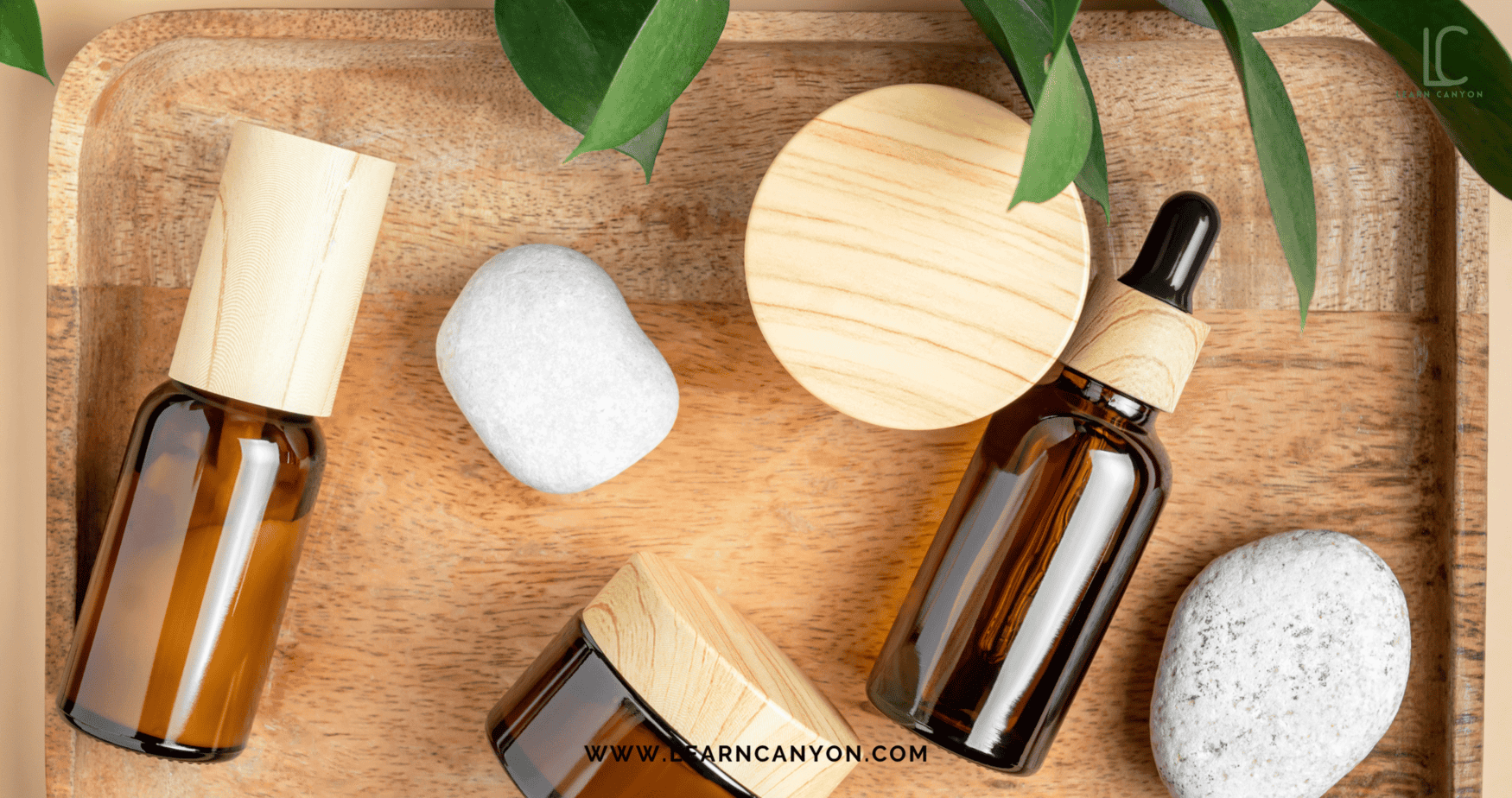
Bonus Tips for Best Results
- Be consistent, pigmentation didn’t happen overnight, and it won’t disappear overnight either.
- Don’t overload your skin. Less is often more, especially when dealing with inflammation-based pigmentation.
- Nighttime is a great window for skin regeneration, so use your brightening serum before bed too.
With a well-crafted organic routine, you’re not just fading spots, you’re restoring your skin’s whole rhythm. And to me, that’s real beauty.
Formulation Tips for Natural Brightening Products
Now let’s get into the lab mindset, because creating a truly effective natural brightening product isn’t just about adding a few “popular” ingredients and hoping for the best. It’s about strategy, synergy, and stability.
Whether you’re formulating a serum, gel, cream, or facial oil, here are some of my essential tips to make your brightening formula not just beautiful, but functional:
- Understand Ingredient Synergy: One ingredient is great, two that work in harmony? Even better. For example, combining niacinamide with licorice extract can give you a dual-action brightening and calming effect. Pairing natural Vitamin C (like Kakadu Plum) with hyaluronic acid improves both penetration and hydration.
- Be Precise with Percentages: More doesn’t mean better. Alpha-arbutin, for instance, is best used at 1–2%. Niacinamide at 3–5% is ideal for brightening without irritation. Overdoing actives in a natural formula can backfire, especially when working with sensitive or melanin-rich skin.
- Choose the Right Base: The delivery system matters. If you’re making a serum, a light gel base with aloe vera and glycerin ensures deeper penetration. For creams, emulsify with gentle systems like Ritamulse SCG and include fatty acids that enhance skin barrier repair while actives do their work.
- Avoid Photosensitizers: Ingredients like citrus essential oils may seem appealing for “brightening,” but they can be photosensitizing and worsen pigmentation. Stick to safe botanical extracts or CO2 versions that are non-irritating and UV-stable.
- Protect Heat & pH-Sensitive Actives: Vitamin C derivatives and ferments can degrade in high heat or at the wrong pH. Always measure your final pH (aim for 4.5–6 depending on your actives), and add sensitive ingredients in your cool-down phase.
- Packaging Makes a Difference: Light, air, and heat are the enemies of most brightening actives. Use opaque or UV-protective bottles and consider airless pumps to maintain product integrity over time.
- Don’t Forget Preservatives: Even in natural skincare, preservation is key. Look for broad-spectrum, ECOCERT-approved systems that won’t compromise your formula, especially when you’re working with water-based actives like aloe, hydrosols, or extracts.
When you get your formulation fundamentals right, your product doesn’t just brighten, it transforms. And it does so gently, consistently, and beautifully over time.
What to Avoid When Treating Pigmentation Naturally
Okay, let’s talk about the things you shouldn’t do, because just as important as choosing the right ingredients is knowing what can actually sabotage your progress. I’ve seen this happen time and again, even with the most well-intentioned routines. Sometimes, less is truly more.
Here’s what I always recommend steering clear of when you’re on a natural brightening journey:
- Harsh Physical Scrubs: It might feel satisfying to exfoliate away dullness, but gritty scrubs (especially with walnut shell or sugar) can cause microtears and inflammation. And inflammation = more melanin production. Instead, opt for gentle enzymatic exfoliants like papaya, pumpkin, or lactic acid from fermented sources.
- Citrus Essential Oils in Daytime Products: Yes, lemon or orange oil sounds “brightening,” but they’re phototoxic if not used properly, and that can worsen pigmentation when exposed to sunlight. If you’re using citrus oils at all, keep them strictly in wash-off products or nighttime formulas, and always in controlled percentages.
- DIY Recipes Without pH Control: I get it, DIY is fun. But slathering on raw lemon juice, apple cider vinegar, or turmeric paste without understanding pH, dosage, or skin compatibility? That’s risky. Skin irritation often leads to post-inflammatory hyperpigmentation, especially on deeper skin tones.
- Overuse of Actives: Using too many brightening actives at once can overwhelm the skin barrier. I always say: build slow, layer smart. Your skin doesn’t need a crowd, it needs clarity. Start with one or two targeted ingredients and see how your skin responds.
- Skipping Sun Protection: This is the biggest one. No matter how magical your brightening blend is, it won’t work if UV rays are still triggering melanin production. Natural actives need to be protected during the healing phase. A non-nano zinc oxide sunscreen is your best friend here.
- Impatience and Inconsistency: Natural skincare takes time, it works in harmony with your skin’s rhythm, not against it. Switching products every two weeks or expecting overnight results can do more harm than good. Trust the process, stay consistent, and let your skin breathe.
The goal isn’t just to fade pigmentation, it’s to restore balance, protect your barrier, and allow your skin to heal in its own beautiful time. When you avoid these common pitfalls, you give your skin the peace it needs to thrive.
Formulas to Fade Dark Spots Naturally
Let’s get practical, shall we? You’ve heard me talk about ingredients, routines, and what not to do, now here’s where the magic really begins. I’m sharing a few simple yet powerful sample formulations that I’ve crafted either in the lab or for my students at Learn Canyon. These are beginner-friendly, gentle, and targeted for pigmentation-prone skin using 100% natural and organic ingredients.
These aren’t meant to be commercial-ready, but they’ll give you a great head start on your own formulations!
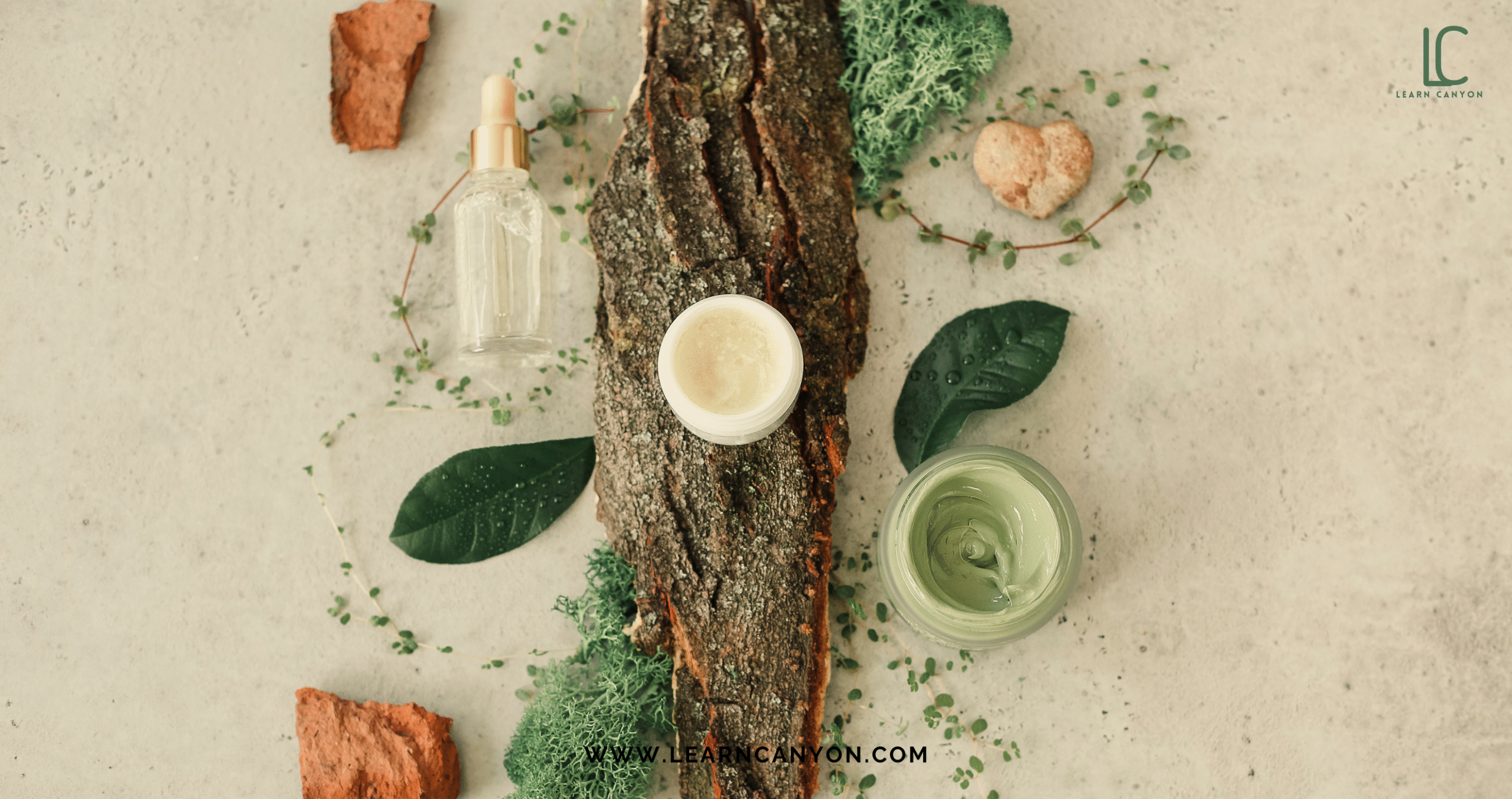
1. Licorice & Niacinamide Brightening Serum (Water-Based)
Phase A:
- Chamomile Hydrosol – Qs.
- Glycerin – 3%
- Niacinamide – 4%
- Sodium PCA – 2%
- Licorice Root Extract – 3%
Phase B (Cool Down):
- Hyaluronic Acid (1% solution) – 10%
- Preservative (Geogard Ultra or equivalent) – 1%
- pH adjust to ~5.5
Lightweight, gentle, and ideal for daily AM & PM use. Follow with SPF in the morning.
2. Turmeric & Rosehip Facial Oil (Oil-Based Spot Treatment)
- Rosehip Seed Oil – 80%
- Tamanu Oil – 10%
- Sea Buckthorn CO2 Extract – 5%
- Turmeric CO2 Extract – 2%
- Vitamin E (Tocopherol) – 1%
- Lavender Essential Oil – 1% (optional, ensure skin compatibility)
Apply as a night treatment to stubborn dark spots. Use sparingly, CO2 extracts are potent!
3. Vitamin C Glow Gel (Aloe-Based Leave-On Gel)
Phase A:
- Aloe Vera Juice –Qs.
- Sodium Ascorbyl Phosphate – 3%
- Panthenol – 2%
Phase B:
- Xanthan Gum – 0.5%
- Glycerin – 4%
Phase C (Cool Down):
- Kakadu Plum Extract – 5%
- Preservative – 1%
- pH adjust to 5–5.5
A cooling, antioxidant-rich gel that hydrates, protects, and gradually brightens.
Each of these formulas is designed to support your skin, not shock it.
They respect the delicate balance of nature and your skin’s own rhythm. You can always tweak the actives, emulsify them into creams, or boost them with complementary extracts depending on your level of experience.
And remember, consistency is everything.
These aren’t quick-fix formulas, they’re skin allies for the long game.
Realistic Results:
Let’s take a breath and get real for a moment. Because while I absolutely believe in the power of plants and organic formulations (it’s my life’s work, after all), I also believe in setting honest expectations.
Organic skincare isn’t a magic eraser, it’s a gentle guide. It won’t bleach your dark spots overnight or give you “glass skin” in three days.
What it will do is work with your skin, calming inflammation, supporting healthy regeneration, and fading pigmentation over time in a way that’s safe, sustainable, and non-disruptive.
Here’s what you can realistically expect:
- Results Take Time: You may start noticing subtle brightening in 3–4 weeks, but true improvement in pigmentation usually takes 8–12 weeks with consistent use. This is especially true for deeper melanin levels and long-standing marks.
- Skin Gets Stronger, Not Just Brighter: One of the biggest wins with natural skincare? It doesn’t just fade spots, it strengthens your barrier, reduces inflammation, and helps your skin feel more stable. That means fewer breakouts, less redness, and a healthier glow overall.
- Fewer Side Effects, More Skin Harmony: No flaking, peeling, or post-inflammatory pigmentation rebounds like with strong chemical actives. Organic actives gently guide your skin back into balance without the drama.
- You Still Need SPF and Lifestyle Support: Even the most beautiful formulation won’t stand a chance against daily sun exposure, stress, poor sleep, or inflammatory foods. Treat your skin like a garden, sun protection, hydration, and nourishment are non-negotiable.
- Progress Over Perfection: You’re not just lightening spots, you’re changing how you relate to your skin. It’s about healing from the inside out. With patience and presence, you’ll begin to see your skin not just as a problem to solve, but as something truly precious to care for.
Organic skincare is a long-term relationship, not a quick fix. And trust me, as a formulator, a mentor, and someone who’s walked this path, it’s so worth it.

Conclusion
If there’s one thing I’ve learned after years of working with both clients and students, it’s that true transformation takes intention. It’s not just about chasing brighter skin; it’s about building a relationship with your skin that’s rooted in trust, care, and nourishment.
Organic skincare doesn’t just lighten spots, it lightens the burden we’ve been taught to carry about “flaws.” It invites us to shift from quick fixes to conscious choices. To tune into the rhythms of our body, and trust in the healing potential of nature.
Yes, it takes consistency. Yes, it requires patience. But every time you reach for that serum you crafted with care, or apply that oil infused with plant wisdom, you’re doing something powerful, you’re choosing gentle, effective, and soul-aligned skincare.
Let nature guide you. Let your formulations reflect your love. And remember: your skin doesn’t need perfection. It just needs presence.
You’ve got this, and your glow?
It’s already on its way.

